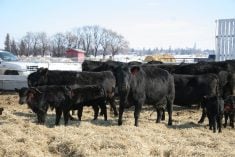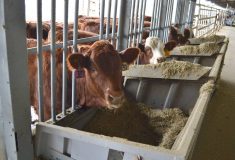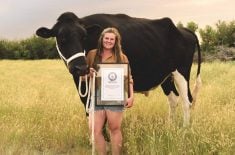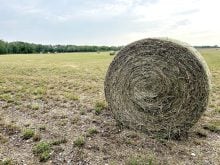Glacier FarmMedia – An online consultation on livestock traceability came back with widespread support for the general premise — and concerns about tighter timelines for reporting and tag retention.
Last year, the Canadian Food Inspection Agency unveiled proposed changes to Canada’s national livestock traceability rules, including a shorter window in which producers are to report animal movements and requirements for more geographical data.
In March 2023, the agency opened a 90-day consultation on the changes. Just shy of 11 months after the start of that window, industry now has the results of their feedback.
Read Also

Milk concentration plant officially opens in Alta.
Canadian raw-milk processing history made with start up of Dairy Innovation West milk concentration plant in Alberta
An online consultation on livestock traceability came back with widespread support for the general premise, but with concerns about tighter timelines for reporting and tag retention.
Last year, the Canadian Food Inspection Agency unveiled proposed changes to Canada’s national livestock traceability rules, including a shorter window in which producers are to report animal movements and requirements for more geographical data.
In March 2023, the agency opened a 90-day consultation on the changes. Just shy of 11 months after the start of that window, industry now has the results of their feedback. A “What We Heard” report recently published on the CFIA website summarizes 1,299 comments received from 778 submitters during last year’s feedback period.
Livestock traceability has been implemented in various forms across livestock sectors, with various degrees of benefit and cost to producers.
The proposed changes include adding goats and farmed cervids like deer and elk to the requirements and introducing movement requirements for all regulated species, which the agency says will set the stage for quicker response to disease outbreaks. Other proposals include a reduction in reporting requirements to seven days (from 30 to 60 days), requiring producers to report premises identification numbers and other requirements around animal indicators, including tags.
The CFIA also says it plans to modernize the way animals are identified to make indicators technology neutral.
While focused on the new rules, the agency said it also received many comments about tag loss, which the CFIA refers to as animal indicators. If a tag is lost, it must be replaced by the person in possession of the animal. The agency noted concerns about the high cost of tags.
Support
In April 2023, a farm group representing elk producers said it had no issue with being added to traceability requirements. The move would open market access doors and could ease transportation across Canada.
At the time, Manitoba Elk Growers Association president Ian Thorleifson said Alberta was already surpassing the proposed national requirements.
Reporting for elk is a patchwork across Canada, he said. He expected the new regulations to bring some standardization, although Canada’s elk traceability system may never be totally uniform.
“It’s going to be an interesting situation, but overall, it’s not hard to imagine how it’s going to work and I think it will work quite well,” he told Glacier FarmMedia at the time. “And it will be advantageous for producers.”
Technology-neutral terminology also got the green light from respondents, as did easier record-keeping requirements.
Pushback
Respondents still have concerns about the time required to adhere to some of the requirements.
Reporting times and licence plate numbers of vehicles involved in livestock movements would take too much work, some argued. Others pointed to the burden these rules would put on livestock fairs and exhibitions. Events run by small organizations might not have the capacity to meet new requirements.
As well, there were challenges raised around reporting the departure of pig carcasses and the date and time of departure for live pigs.
Selling or transfer of approved indicators (tags) to other parties could also be problematic.
Mixed reaction
Several other areas garnered mixed reactions, among them the amount of time required to report movement. Some thought seven days made sense, some wanted a longer time and some a shorter time.
There was some support for veterinary clinics to report movement of livestock to and from the premises, but others thought the burden should be placed on livestock owners. An exemption for livestock imported for immediate slaughter also raised concern that the practice might open an avenue for animal disease.
And while there was support for identifying young meat goats, some people were concerned with the burden of that requirement due to the low market value of the animals.
Next steps
The CFIA said it will go back to stakeholders to find solutions to the concerns. The agency says it plans to publish final amendments to the new traceability regulations in 2024.
– With files from Alexis Stockford















